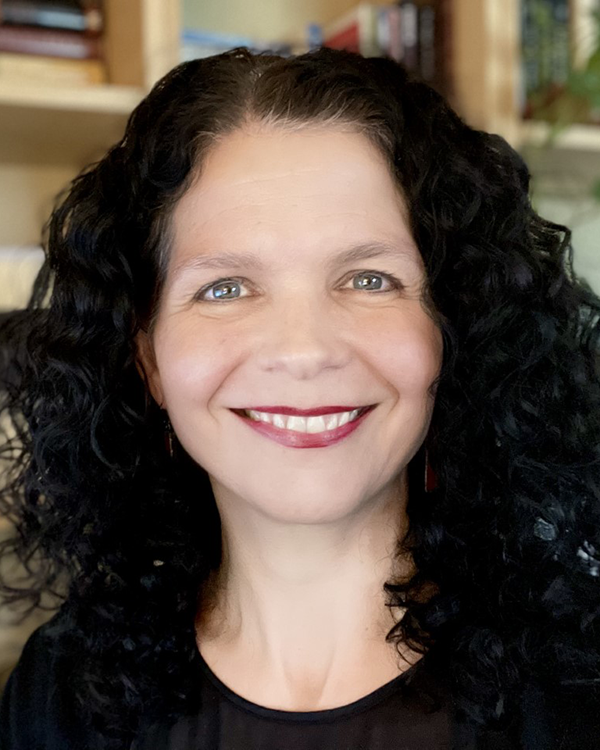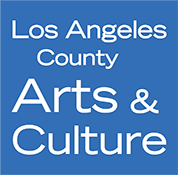"I know the [Creative Strategist] program is succeeding when I hear a department colleague tell me that working with the creative strategist has introduced them to new ideas or shifted their approach to their work, and when an artist tells me that their residency has changed their artistic practice..." —Kim Glann
 Kim Glann is a self-described theater nerd—she loves collaborating with people who have different skill sets to create something larger than themselves. The Department of Arts and Culture’s Creative Strategist-Artist in Residence program, which she manages, is steeped in a similar kind of collaboration.
Kim Glann is a self-described theater nerd—she loves collaborating with people who have different skill sets to create something larger than themselves. The Department of Arts and Culture’s Creative Strategist-Artist in Residence program, which she manages, is steeped in a similar kind of collaboration.
Glann grew up in Columbus, Ohio, where she fell in love with theater in high school. She studied the form at Otterbein University and after graduation, when a lot of her theater friends were heading to New York, she went west.
In Los Angeles, she directed, produced, acted, and served as a dramaturg. She ran the theater company Moving Arts for several years, and co-produced eclectic works including The Car Plays, a site-specific theater experience that was a staple in California theater festivals throughout the 2010s.
Glann began working as a marketing manager at the County-owned Ford Theatres in 2010, operated by the then-LA County Arts Commission (now the Department of Arts and Culture). She developed marketing and PR campaigns and content for the theatres’ show seasons and for the LA County Annual Holiday Celebration. Promoted to Director of Marketing and Communications in 2016, she also oversaw the facility’s ticketing, and directed outreach and communications around its $80M renovation and eventual reopening. Despite escalation in roles at the Ford, her involvement in independent theater never stopped—she has been an ensemble member of the Ghost Road Company since 2010 and a Moving Arts company member since 2000.
In 2019, the County transitioned the operation of the Ford Theatres to the LA Philharmonic and the LA County Arts Commission into the first-ever LA County Department of Arts and Culture. Glann came aboard to managed cross-sector initiatives. The Creative Strategist program that she directs is a recommendation of the Cultural Equity and Inclusion Initiative—it places artists, arts administrators, or creative workers in County departments to co-create with staff artist-driven solutions to complex challenges. Creative strategists apply their artistic and social practice, act as a thought partner, and work with the department as a cultural observer, creative interpreter, and liaison between County and community.
"My experience as a theater producer, that left brain/right brain thinking, works well in this role," Glann said. "As a producer, you’re supporting a team of artists in the creation of new work. And on the flip side, it’s helpful to know what it is to be an artist. When we place an artist in the County, I can translate government jargon and help them navigate the County department structure. I’ve been at the County for 12 years now, so I know where the systems are rigid, and where there are opportunities to change."
Some creative strategists help County employees understand how they can use the arts to build stronger connections with their constituents. Some help County employees develop programming that builds in a listening component, so that departments are not assuming what kinds of services people need or want—they are hearing it directly. Glann is honest about the fact that the residencies are not always easy. “The residencies may require that staff step out of their comfort zone and welcome new ideas.”
The Department of Arts and Culture has five active creative strategists currently, at the Office of Violence Prevention, the Department of Parks and Recreation, the Los Angeles City/County Native American Indian Commission, the Office of Immigrant Affairs, and Workforce Development, Aging, and Community Services. “I know the program is succeeding when I hear a department colleague tell me that working with the creative strategist has introduced them to new ideas or shifted their approach to their work, and when an artist tells me that their residency has changed their artistic practice and made them think differently about the impact they can have,” she explains.
Glann’s ultimate goal is that the practices and methods the artists bring to the County departments during their residencies are sustained, that they are not just one-off projects that fade from memory over time. “Our intent for the program is that it has long-lasting impact and that County employees continue to use these arts-based ideas and models, and that artists are valued for their creative and innovative thinking,” she says. “And of course, that we inspire more artist residencies in government.”

